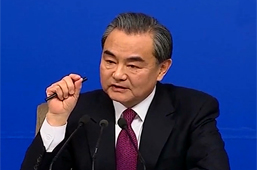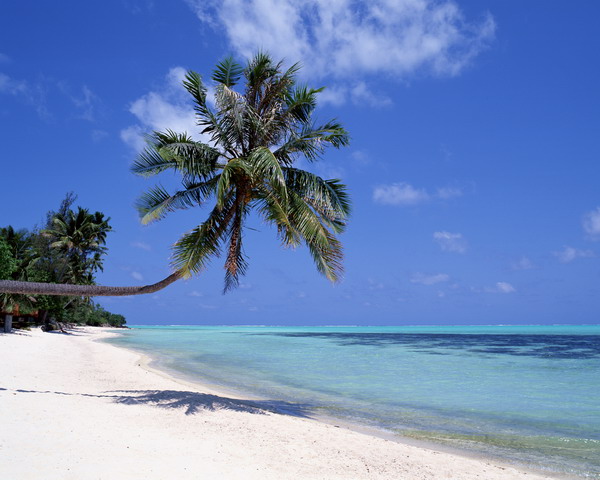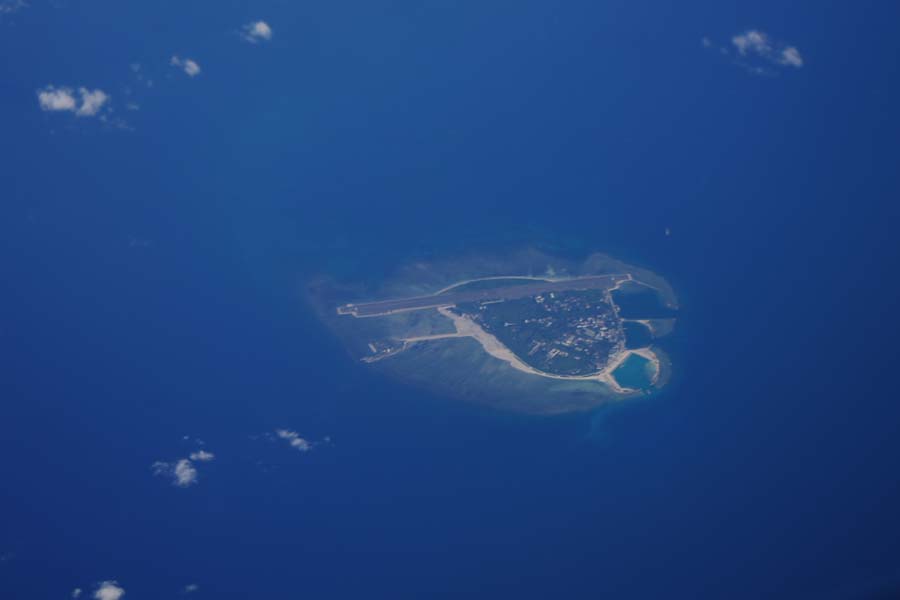1980
On January 30, with regard to Vietnam's intrusion and occupation of islands and reefs of China's Nansha Qundao as well as the white paper published in September 1979, the Ministry of Foreign Affairs of China published a document titled China's Sovereignty over Xisha Qundao and Nansha Qundao Are Indisputable, demonstrating China's sovereignty over the islands.
On May 15, the Malaysian government unilaterally declared having sovereignty and jurisdiction over the exclusive economic zone within 200 nautical miles measuring from the baseline, including Zengmu Basin as well as the 11 Islands and reefs of Nansha Qundao into its territory.
On July 3, Vietnam and the Soviet Union signed a cooperation agreement on carrying out geological prospecting and exploiting for oil and natural gas on the southern continental shelf of Vietnam.
On July 21, spokesperson for the Ministry of Foreign Affairs of China pointed out in a statement that, any country carrying out prospecting and exploiting and other activities on the sea area of China's South China Sea without permission of the People's Republic of China was illegal, and "any treaty or contract on carrying out prospecting, exploiting and other activities on the above-mentioned area signed between any countries was null and void".
In August, the Philippines sent troops to invade and occupy China's Siling Jiao.
On November 8, 2 B-6 bombers of the Chinese Navy Air Arm carried out long-distance aerial reconnaissance over Nansha Qundao for the first time.
1981
In June, the CPC Corporation of China Taiwan sent survey crew to Taiping Dao and set up the "Oil Well No. 1 of Taiping Dao".
On November 6, under the approval of the Chinese State Council, the Revolutionary Committee for Xisha Qundao, Nansha Qundao and Zhongsha Qundao was renamed as "the Administration Office of Xisha Qundao, Nansha Qundao and Zhongsha Qundao of Guangdong Province" (county-level), as a dispatched office of the Guangdong Provincial People's Government and directly under the leadership of the Office of the Hainan Administrative Region of Guangdong Province.
1982
On January 18, the Ministry of Foreign Affairs of Vietnam published the White Paper on the Hoang Sa (Paracel) and the Truong Sa (Spratly) Islands, Vietnam's Territory, laying unlawful territorial claims over China's Xisha Qundao and Nansha Qundao once again.
On February 2, Chief of the General Staff of the PLA, Yang Dezhi and the Deputy Chief of the General Staff of the PLA, Yang Yong inspected Xisha Qundao.
On November 12, the Vietnamese Government published the Statement on the Territorial Sea Baseline of Vietnam, asserting that the maritime border of the Beibu Bay was "provided" in the China-France Boundary Treaty of 1887. At the same time, it deemed China's Xisha Qundao and Nansha Qundao as islands belonging to Vietnam, and asserted that it would define territorial sea baseline for them.
On November 28, in reply to the Statement on the Territorial Sea Baseline of Vietnam published by the Vietnamese Government, the Chinese Government made a statement pointing that "the so-called Beibu Bay border line alleged by the Vietnamese Government was null and invalid. This is a willful misinterpretation of the Historical Boundary Treaty between China and Vietnam, and a severe violation against China's territorial sovereignty. The Special Treaty of Further Discussion on Border Affairs signed by China and France in 1887 had never make and delimitation on the sea area of the Beibu Bay. Therefore, there wasn't any sea border line at the sea area of the Beibu Bay. And it reiterated that Xisha Qundao and Nansha Qundao were inseparable and sacred parts of China's territory.
1983
On April 24, the China Council for the Place Names was authorized to publish Parts of the Standard Names for China's Nanhai Zhudao. 287 different place names in total were included.
From May to June, the naval formation of the Chinese Navy South China Sea Fleet went to the South China Sea for ocean navigation drills. The formation arrived at the Zengmu Ansha on May 22. This was the first time for the Chinese naval vessels to reach the sea area of Nansha Qundao.
On August 20, Malaysia sent troops to invade and occupy China's Danwan Jiao.
On September 14, the Chinese Government made a statement on Malaysia's illegal intrusion and occupation of the Danwan Jiao of China's Nansha Qundao, reiterating that "all the islands on the South China Sea, Nansha Qundao, Xisha Qundao, Zhongsha Qundao and Dongsha Qundao have always been parts of China's territory. China has the legitimate sovereignty over Nansha Qundao, which would never allow any country to violate on whatever excuses and by whatever means.
1984
On May 31, China decided to establish the Hainan Administrative Region, and put Xisha Qundao, Nansha Qundao as well as Zhongsha Qundao under the jurisdiction of the Hainan Administrative Region.
In July, the South China Sea Institute of Oceanography of the Chinese Academy of Sciences began to carry out "comprehensive oceanographic surveys on Nansha Qundao and the adjacent sea area", which lasted for 24 days with a voyage of about 2,172 nautical miles. And the southernmost point of the sea area being surveyed was China's Zengmu Ansha.
On October 10, the Ministry of Foreign Affairs of Malaysia announced that it had reached an agreement with the Vietnam side on discussing about the "disputes" over Anbo Shoal of Nansha Qundao together. And it alleged that Anbo Shoal was Malaysia's "territory", taking the Map of the Delimitation of the Continental Shelf which was newly published in 1980 as evidence.
1985
On June 12, the Chinese Government presented a letter to the UN Secretary General, pointing out that the so-called "Kalayaan Islands" proposed by the Philippines were parts of Nansha Qundao which were China's territory. And China had indisputable sovereignty over Nansha Qundao and the adjacent waters.
1986
On January 1, Secretary General of the Central Committee of the CPC Hu Yaobang, the Chinese Navy Commander Liu Huaqing and the Political Commissar of the Guangzhou Military Area Command Zhang Zhongxian inspected Yongxing Dao of Xisha Qundao. Secretary General Hu Yaobang wrote an inscription at the Xisha Museum and the meeting room of Xisha Qundao Working Committee respectively. The first one was "for the sake of the security of the State, dare to fight against the fierce wind and the sinister waves!" And the second one was "developing Qizhouyang and defending the border land of the South China Sea!"
From November to December, Malaysia sent troops to invade and occupy Guangxingzai Jiao, Nanhai Jiao and Andu Bank of China's Nansha Qundao.
1987
In February, Vietnam invaded and occupied the Barque Canada Jiao of China's Nansha Qundao.
In March, the 14th session of the Intergovernmental oceanographic commission of the UNESCO which was held in Paris, France, reviewed the implementation plan for the Global Sea-level Observing System, and passed the resolution to build 200 Maritime Meteorological Observatories across the world. Among them, 5 will be built by the Chinese Government including the Oceanographic Station of Nansha Qundao whose number was No. 74 and the Oceanographic Station of Xisha Qundao whose number was No. 76. At that time, neither the Vietnamese Delegation nor the Philippine Delegation present at the conference expressed any objections.
From April to June, in order to construct the Oceanographic Station of Nansha Qundao, the Chinese Government organized several relevant governmental departments to the sea area of Nansha Qundao, conducting surveys on the dozens of islands as well as the adjacent sea area, and eventually decided to build the oceanographic station on Yongshu Jiao.
1988
From January to March, the Chinese Navy entered and garrisoned 6 islands and reefs including Yongshu Jiao, Huayang Jiao, Nanxun Jiao, Dongmen Jiao, Chigua Jiao and Chubi Jiao of Nansha Qundao successively.
From January 15 to June 28, Vietnam sent troops to invade and occupy the Xijiao Jiao, Riji Jiao, Daxian Jiao, Wuye Jiao, Dongjiao Jiao, Liumen Jiao, Nanhua Jiao, Nailuo Jiao, Bolan Jiao, Guihan Jiao and Qiong Jiao of China's Nanhai Zhudao successively.
From January to February, The Chinese construction troops and convoy hoisted the first five-starred red flag on Yongshu Jiao, officially starting the construction of oceanographic station. In order to impede the construction of the station, the Vietnamese army tried to snatch the reef, but was intercepted by the Chinese Navy convoy fleet responsible for the vigilance task. Under the pressure, the Vietnamese navy had to abandon the operation of snatching Yongshu Jiao.
On March 14, the Vietnamese Navy sent armed personnel to land on Chigua Jiao guarded by the Chinese personnel forcibly and started to shoot first. The Vietnamese ships began to fire with shipboard artillery at the Chinese naval vessels anchored nearby. The Chinese naval vessels were forced to fire back in self-defense, sinking or damaging 3 Vietnamese warships to take the initiative. The victory of the naval battle of Chigua Jiao had guaranteed the smooth proceeding of the oceanographic station-construction project on Yongshu Jiao.
On April 13, the 1st session of the 7th National People's Congress of China passed the Resolution on Setting up the Hainan Province. Upon the establishment of Hainan Province, Nanhai Zhudao was put under the jurisdiction of Hainan Province, and its administrative unit was renamed as Xisha Qundao, Nansha Qundao and Zhongsha Qundao Working Committee of Hainan Province, directly under the leadership of the People's Government of Hainan Province.
On April 16, in speaking of the Nansha Issue during his meeting with the visiting Philippine President Aquino, Comrade Deng Xiaoping said that "starting from the friendly relationship between the two states, this issue can be laid aside for a while and the approach of joint-development can be adopted".
On April 25, China's permanent representative to the UN, Li Luye submitted a statement about China's sovereignty over Nanhai Zhudao to the Secretary General of the UN, condemning Vietnam's intrusion into Nansha Qundao, and stating that China reserves its right to retake its lost territory at an appropriate time.
On April 25, the Ministry of Foreign Affairs of Vietnam published a document titled The Hoang Sa and the Truong Sa Islands and the International Laws, airing the standpoints of the Vietnam authorities' attempting to hold China's Xisha Qundao and Nansha Qundao in possession permanently.
On May 12, the Ministry of Foreign Affairs released the Memorandum on Xisha Qundao and Nansha Qundao, refuting the viewpoints of the Vietnam authorities based on historical facts and the International Laws, and reiterating China's indisputable sovereignty over Xisha Qundao and Nansha Qundao.
On August 2, the first oceanographic station that China built on Nansha Qundao, the Oceanographic Station of Yongshu Jiao was completed. And it began to send monthly average water level data to the "Global Sea-level Observing System" of the Intergovernmental Oceanographic Commission of the UNESCO.
On September 19, "the Administration Office of Xisha Qundao, Nansha Qundao and Zhongsha Qundao" was officially renamed as "the Administration Office of Xisha Qundao, Nansha Qundao and Zhongsha Qundao of Hainan Province".
On October 1, according to the notice of the Central Military Commission and the Ministry of Post and Telecommunications, the Hainan provincial Post and Telecommunications Bureau set up a post office in Nansha Qundao. On November 1 of the same year, the Nansha Post Office began to operate officially, becoming the southernmost post office in China.
In November, Vietnam and British Petroleum Company (BP) signed the product sharing contract of the No. 115, No. 117. No. 118, No. 119 and No. 120 blocks which were respectively located at Yinggehai Basin, Xisha Qundao, and West Zhongjian Basin.
1989
In March, China established "the Nansha Front Line Command", responsible for the overall planning of fortifications, construction, patrol, defense, transporting of supplies and survey of Nansha Qundao.
In June, Vietnam sent troops to invade and occupy China's Wan-an Bank, Guangya Bank and Pengbo Castle.
In July, the fifth session of the eighth national assembly of Vietnam passed a resolution, illegally including China's Nansha Qundao into the Khanh Hoa Province of Vietnam.
On August 2, the sovereignty monuments for Yongshu Jiao, Chigua Jiao, Huayang Jiao, Nanxun Jiao, Zhubi Jiao and Dongmen Jiao of China's Nansha Qundao were completed.















